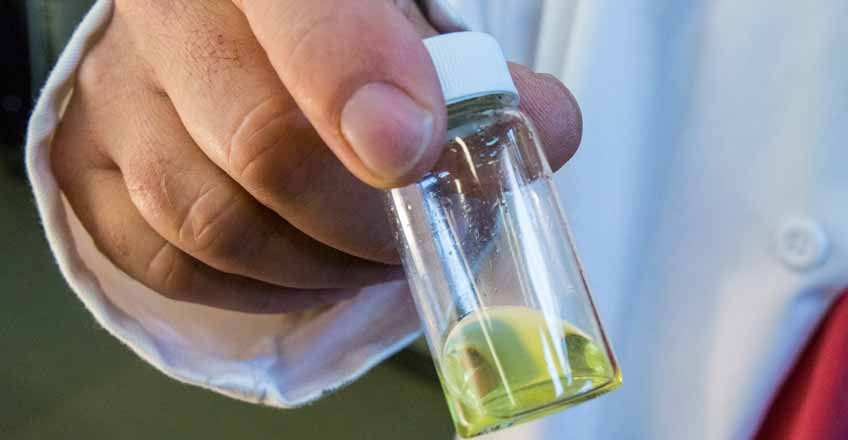Solar Paints
- SolarKobo
- Mar 13, 2023
- 3 min read
We are living through an unprecedented solar boom. Solar-based technologies are finding applications in virtually all aspects of life, providing alternative energy solutions and widening the range of options available to us. We've covered solar air-conditioners, solar car chargers, solar generators, solar water pumps, solar laptop chargers, solar water heaters, solar freezers, solar streetlights, solar roofs, etc.
By definition, a paint is any pigmented liquid, liquefiable, or solid mastic composition that can be applied to a surface in a thin layer after which it converts to a solid film on the layer. They serve to protect, color, or provide texture a surface. They come in many colors—and can be either oil-based or water-based. By extension, a solar paint would mean a any paint material that can generate electricity, but still work as and perform the functions of normal paint. They would have the power to turn an entire building into a solar-generating surface. In 2019, Google filed a patent application for a solar paint, bringing solar paints into public consciousness.

Classes
Colloidal Quantum Dot Solar
Quantum dot solar paint is a yellow or brown paste that utilizes semiconductor nanocrystals that emit light when struck with a UV beam.
Researchers from the University of Toronto were the ones to develop this class of solar paint, also known as photovoltaic paint or colloidal quantum dot photovoltaics, that can increase the efficiency of traditional solar cells by up to 11%. The new technique showed a possible 35 per cent increase in the technology’s efficiency in the near-infrared spectral region. The paint was created with a film that contains nanoscale semiconductors and nanoparticles which absorb photons, including those in the near-infrared spectrum, to generate electricity. These semiconductor crystals are already used in solar panels as well as LEDs and computers.
This the most common type of photovoltaic paint.

Hydrogen-Producing Solar Paint
Developed by a team of researchers from the Royal Melbourne Institute of Technology (RMIT) this class of solar paint produces energy from water vapor in the air. The paint absorbs moisture and uses solar energy to split the water molecules into hydrogen and oxygen. The hydrogen can be used as a source of clean energy.
The researchers hope the technology will one day allow them to spray solar cells onto flexible surfaces, or print solar-sensitive colloidal quantum dots onto a flexible film to coat weirdly shaped surfaces, from patio furniture to an airplane wing. They suggest that covering a surface the size of a car roof in CQD-coated film could produce enough energy to power 24 compact fluorescent lights.
Perovskite Solar Paint
Perovskites are mineral compounds that have a semi-conducting properties, capable of not only transporting electric charge but also sustaining the light. Perovskites have increasingly become the cynosure of the solar research community in the question for alternatives to silicon. They can be dissolved in solvents and painted or sprayed over surfaces. Perovskite is a great light absorber that is now widely used in boosting the efficiency of solar panels with by adding a layer of perovskite to the silicon solar cells. In the near future, perovskites could be used to paint any exposed surface and harness the sun’s energy.
While perovskite-based solar paints have the potential to be a promising technology, but they also have their challenges. One issue is that they use a lead-based absorber, which can be harmful to the environment if released. While the amount of lead used is small, it significantly increases the efficiency of perovskite solar cells. Researchers have attempted to address this issue by creating barriers to prevent lead leakage, but these solutions are not always effective. For example, one method that absorbs lead if solar cells break or malfunction is only 96% effective. Additionally, the human body has zero tolerance for lead, so even if perovskite solar paint becomes widely used, the risk of lead exposure will remain a concern.
To be sure, while this represents a new breakthrough, and for all the hype that promises that it will solve all problems, it is not commercially available at this time and probably won't be in a long time. The capital drawback of solar paint is its low efficiency in comparison with traditional solar panels. Solar paint has an efficiency range of 3-8%, meaning it can only capture a small percentage of the sun's energy. In contrast, silicon solar panels have reached efficiencies of over 20%. Many experts believe that a solar technology must have an efficiency of at least 10% to be commercially viable. Therefore, while solar paint has the potential to revolutionize the way we harness solar energy, it still has a long way to go before it can compete with established technologies.


Comments